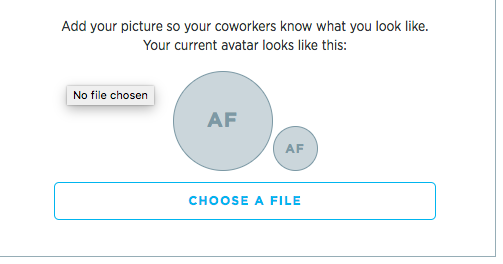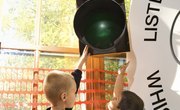Most people think of communication as being written or spoken language. It is very likely, however, that you don't even realize the many forms of visual communication that you encounter on a daily basis. Visual communication has been a part of human life since the earliest days of civilization, and the importance of visual communication cannot be overstated.
What Is Visual Communication?
Defined roughly, visual communication can be said to be any kind of communication that transmits information using colors, symbols, imagery or the placement of objects and materials in space. A neon sign with a picture of a martini glass may communicate that a building is a bar, while two large beams placed in an "X" shape over the entrance to a mine shaft may indicate that the entrance is closed.
These are just two forms of visual communication, but there are many examples, many of which you may not even be aware that you understand because they are so ingrained in your day-to-day life. In fact, studies have shown that visual communication is the type of communication that individuals in society typically rely on most heavily. Everything from film to typography to color choices to shapes make up the many forms of visual communication.
The importance of visual communication in a culture or a community can be seen in the many ways on which the medium is relied. Traffic lights, stop signs, poison warning labels, colors and shapes indicating danger and where to go for help are all examples of the heavy reliance and importance we place on visual communication. To assume that important things are written in words and nonverbal communication is limited to decoration, adornment and aesthetics is to ignore the importance of visual communication.
History of Visual Communication
Since the earliest days of civilization, man has used visual communication strategies to transmit information. Cave drawings, sketches in dirt or sand and even marks of war paint worn on the body all served as signals to those who saw them and understood instinctively or from experience what those symbols meant. While no one is sure exactly when cave paintings first originated or what their original purpose was, the assumption is that they were intended as a kind of early documentation or perhaps part of a religious ritual.
Around the year 600, people began to print with wood blocks for the first time. What followed was an explosion of visual communication. Images and symbols could be reproduced over and over again and transmitted around the world. Regardless of the native languages of the speakers, once the images began being associated with words or concepts, they began to act as a universal language.
All forms of visual communication rely on the assumption that both parties in the exchange recognize a symbol or a shape as representing the same thing. As travel has brought various groups of people into contact with one another, forms of visual communication have created a situation where people from different countries who do not share a common language can communicate.
The Advantages of Visual Communication
The main advantage of visual communication is the way that symbols can become universal and supersede the need for a shared language. Visual communication is also used to express different moods and feelings. However, while visual subjects may be universally understood, care needs to be taken that the visual communication that we use does not perpetuate unfair or offensive stereotypes.
Being able to use color and shape in place of sentences or written words means that information can be transmitted instantly, one of the biggest advantages of visual communication. A red stoplight means a driver needs to slam on his brakes, which can happen a lot more quickly if he doesn't have to read words. Visual communication can use symbols and shapes to help viewers understand what they are looking at.
Visual communication can also help you conserve your time. For example, when building a piece of furniture or making a recipe, visual communication helps people complete tasks much faster than if they were working with text instructions alone. Because the brain processes images more quickly than words, you can convey and receive more information more quickly using visual communication.
Related Articles
References
Writer Bio
Ashley Friedman is a freelance writer with experience writing about education for a variety of organizations and educational institutions as well as online media sites. She has written for Pearson Education, The University of Miami, The New York City Teaching Fellows, New Visions for Public Schools, and a number of independent secondary schools. She lives in Los Angeles.











